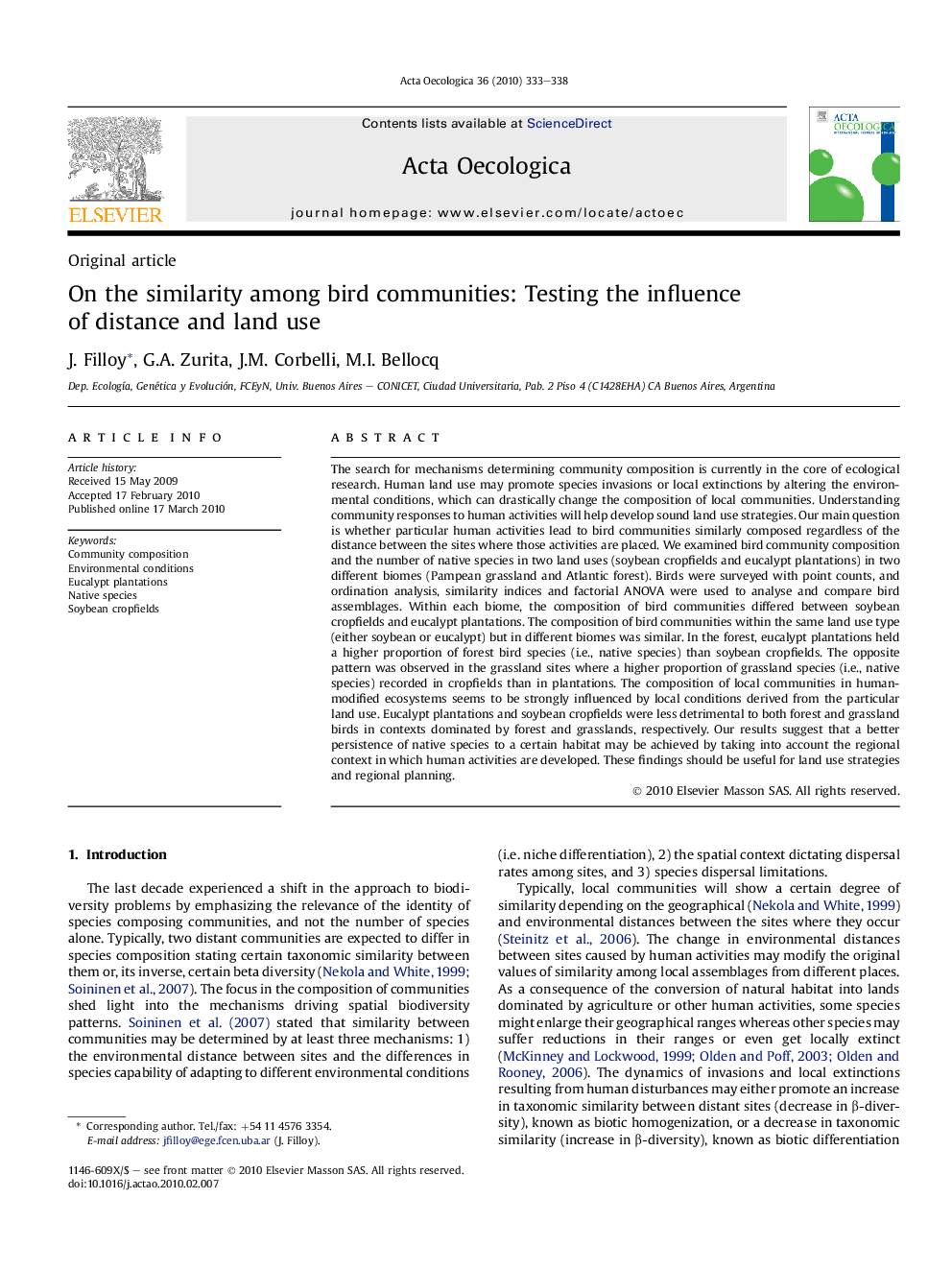| Article ID | Journal | Published Year | Pages | File Type |
|---|---|---|---|---|
| 4381334 | Acta Oecologica | 2010 | 6 Pages |
The search for mechanisms determining community composition is currently in the core of ecological research. Human land use may promote species invasions or local extinctions by altering the environmental conditions, which can drastically change the composition of local communities. Understanding community responses to human activities will help develop sound land use strategies. Our main question is whether particular human activities lead to bird communities similarly composed regardless of the distance between the sites where those activities are placed. We examined bird community composition and the number of native species in two land uses (soybean cropfields and eucalypt plantations) in two different biomes (Pampean grassland and Atlantic forest). Birds were surveyed with point counts, and ordination analysis, similarity indices and factorial ANOVA were used to analyse and compare bird assemblages. Within each biome, the composition of bird communities differed between soybean cropfields and eucalypt plantations. The composition of bird communities within the same land use type (either soybean or eucalypt) but in different biomes was similar. In the forest, eucalypt plantations held a higher proportion of forest bird species (i.e., native species) than soybean cropfields. The opposite pattern was observed in the grassland sites where a higher proportion of grassland species (i.e., native species) recorded in cropfields than in plantations. The composition of local communities in human-modified ecosystems seems to be strongly influenced by local conditions derived from the particular land use. Eucalypt plantations and soybean cropfields were less detrimental to both forest and grassland birds in contexts dominated by forest and grasslands, respectively. Our results suggest that a better persistence of native species to a certain habitat may be achieved by taking into account the regional context in which human activities are developed. These findings should be useful for land use strategies and regional planning.
